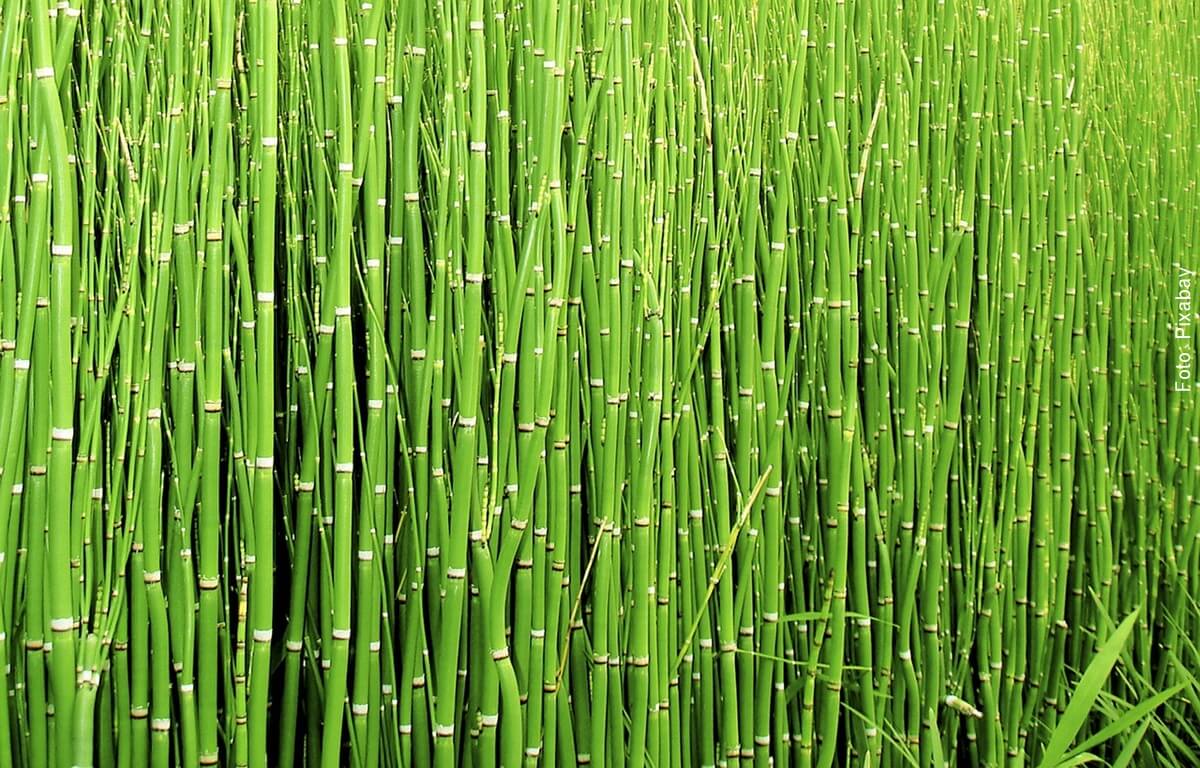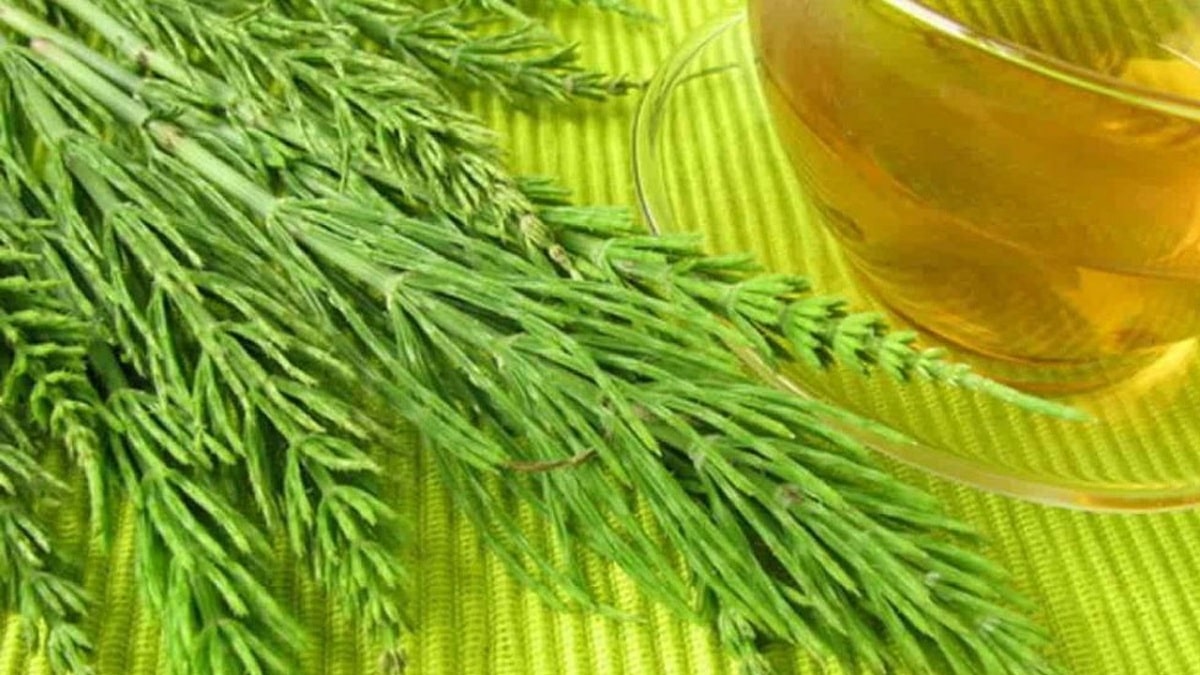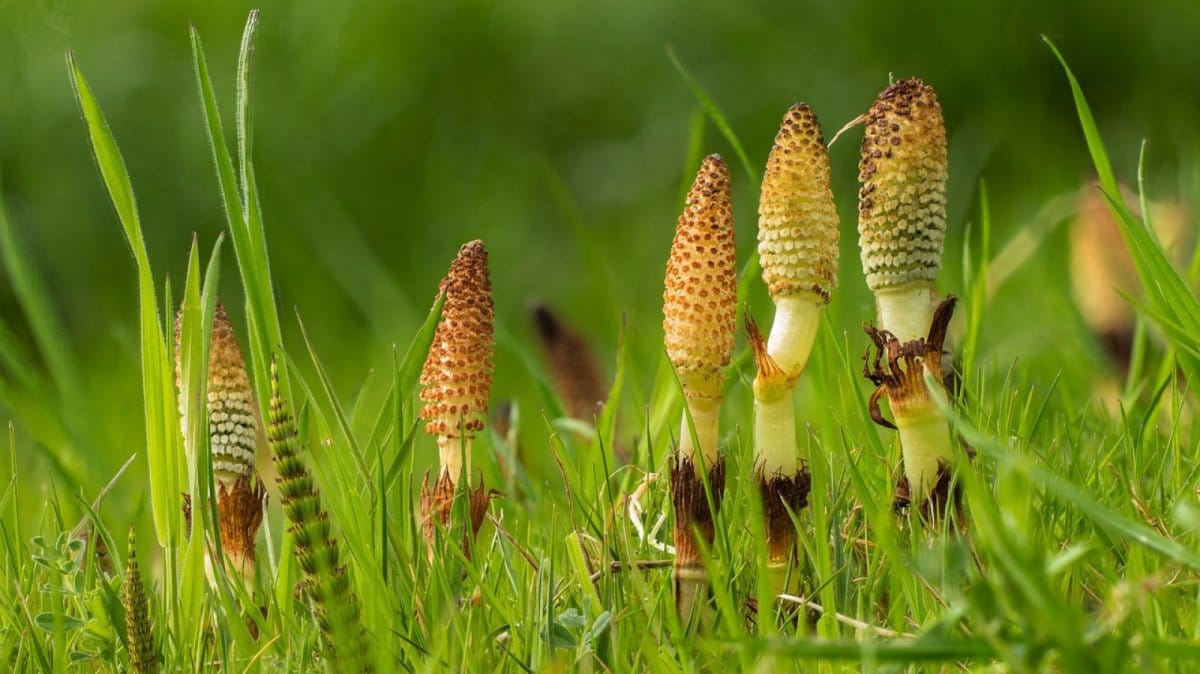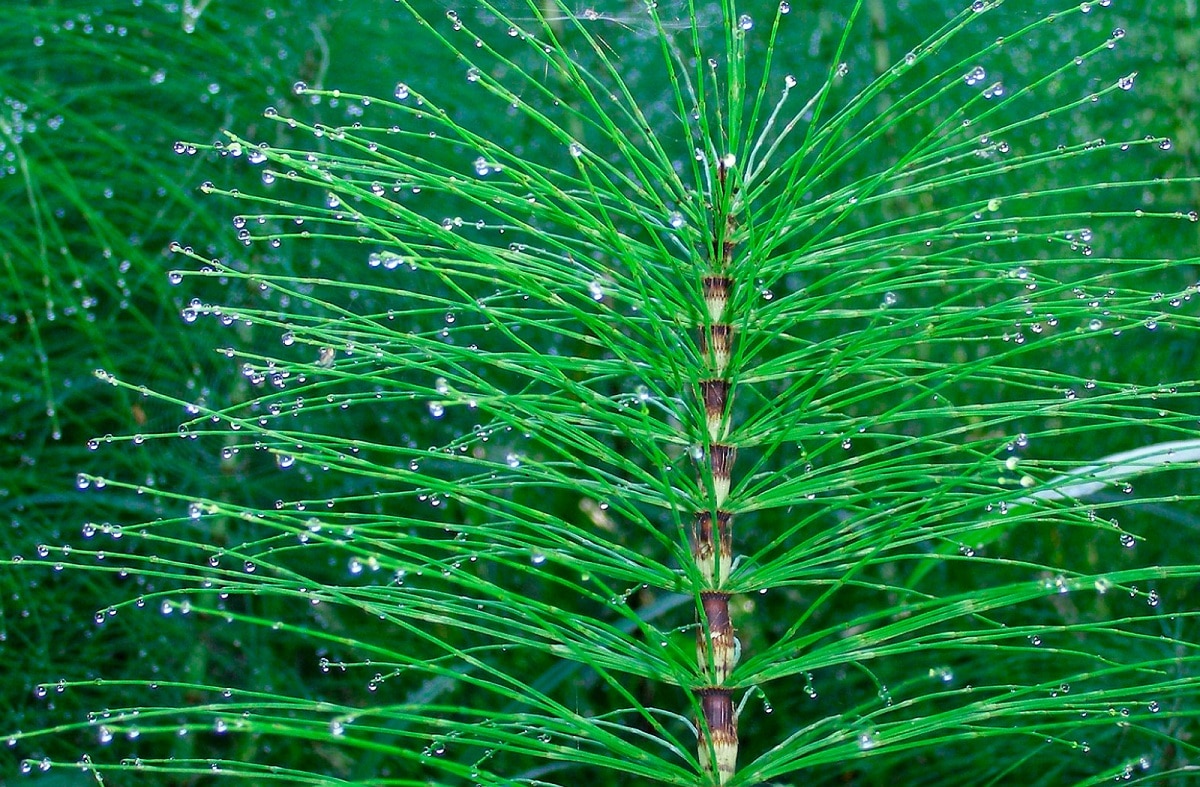
Horsetail is a well-known plant that is used for its many uses. Many people do not know that there are certain horsetail benefits for plants. If used in landscaping for other plants, it can provide certain benefits. Due to its healthy characteristics, it is one of the most popular medicinal materials in the world, and this is for good reason. Appropriately, it is considered a natural anti-inflammatory agent, as well as a rich source of vitamins and minerals.
There are many applications in the medical field. It is believed to have the ability to treat various diseases such as kidney stones, urinary tract infections, tuberculosis, hepatitis, joint diseases, osteoporosis, and nosebleeds. Therefore, we are going to dedicate this article to tell you what are the main benefits of horsetail for plants and what are its main characteristics.
Key features

It is distributed in the temperate climate zone of the northern hemisphere (semi-arid or arid). Grows in sandy clay soils with circulating water (wet places near rivers, streams and wet walls).
It is a perennial shrub characterized by a group of hollow, nodal, leafless, tubular stems and highly branched rhizomes from which the stems grow. The adult plant is 20 to 80 cm tall and has a pointed cup. In addition, it has knots and internodes and a large number of longitudinal grooves.
Two types of stems can be distinguished:
- Fertile, brown, and chlorophyll-free.
- Sterile, taller, branched, greenish-white.
Horsetail properties

It is rich in active ingredients beneficial to the body, such as saponins, flavonoids and alkaloids. It is very useful to improve various diseases. It is also very interesting for those who want to lose weight, restore skin cells and promote hair growth. Next you will know its properties.
- The chemicals give it antioxidant and anti-inflammatory properties.
- Horsetail contains diuretic ingredients.
- It can remineralize the skeletal system.
- It constitutes a cellular regenerator.
- It has healing power.
- It has the ability to converge.
- The high content of horsetail can strengthen nails.
- Detoxifies and cleanses the urinary tract and blood.
Benefits of horsetail for plants

Although horsetail is ancient, it is widely used in gardens for its high verticality and easy cultivation and maintenance. It is a plant that is not attacked by slugs and snails and is a natural anti-slug. You just need to cut a few stems and place them around the most vulnerable plants. In the organic garden horsetail decoction is used as a fungicide, preventive treatment of fungal diseases. A really effective preparation if you know that certain plants are prone to diseases such as mildew, rust, powdery mildew, etc.
It likes mild weather and can be found in cool, shady places. Soil likes sand, but it also occurs in clay. The most important thing is the water, it likes humidity, so it will be in streams, wetlands, etc.
It is a plant that is considered a weed, except that it is difficult to remove (if not, go to the gardening forum to read that not even herbicides can use it). If you want to grow horsetail grass, you should observe and try to mimic its soil, humidity, and other natural conditions. A semi-shady, cool and humid area. Loose soil and constant humidity.
If you want to grow horsetail in pots, a high-quality universal substrate will provide the perfect service for it to grow well. The coconut fiber and pinworm mixture also makes a good base.
Decoction and insecticide
Among the benefits of horsetail for plants we have the decoction and its use as an insecticide. It can be used both to prevent these diseases and to cure them, has eliminated the fungi installed in the plants. It is a powerful bactericide that can treat most fungal diseases and can also be treated naturally.
But this is not its only benefit, it can also stimulate the immune defense of the plant and leave a film layer on the plant, making it impossible for many insects of certain pests to trap the sap.
To make the decoction you have to follow the following steps:
- You need 100 grams per liter of fresh plants or 15 grams per liter of dry plants.
- You must let the cut leaves rest in cold water for 24 hours so that it begins to pickle and the beneficial substances enter the water.
- The important thing is that the water you use comes from rain or spring and does not contain chlorine. If this is not possible, let the tap water sit for 1-2 days before using.
- After this time, you must close the lid and simmer the mixture for 20 to 30 minutes. If you do it with dried herbs, you can start from this point (although I also read that it can be soaked for 24 hours).
- Allow the solution to cool and filter to remove as much of the solid as possible. This is important because it can cause the sprinkler you use to clog in the future.
When applying it, follow these steps:
- It must be diluted to 20%: 1 part horsetail soup + 4 parts water (preferably without bleach).
- You should start spraying in March or April, when the heat begins to arrive. It is used approximately every 15 days and, unlike other extracts, it should be used in the morning on a dry, sunny day. Its performance improves in full sun.
- Can be applied to plants and soil, and many fungi are found before they are transmitted to plants.
- It is important that you know that it can be stored for 10 days in a clay, plastic or opaque glass (non-metallic) container.
- If you use it for prevention, use it regularly (approximately every 15 days). If you already have fungus on your plant, test it for 3 consecutive days and then do it regularly.
- Finally, horsetail decoction can be mixed with nettle extract to add more properties to the mixture.
I hope that with this information you can learn more about the benefits of horsetail for plants.